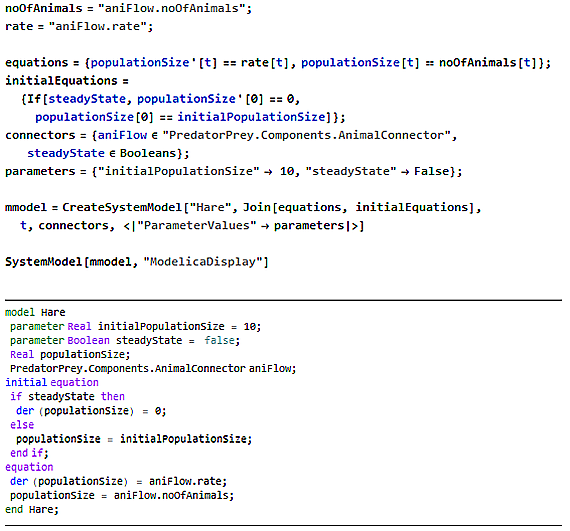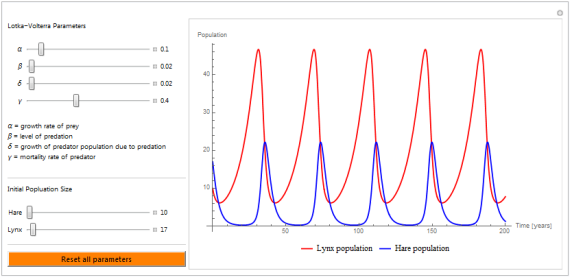Lotka–Volterra
El modelo clásico de Lotka–Volterra fue propuesto originalmente para explicar variaciones en las poblaciones de peces en el Mediterráneo, pero desde entonces se ha utilizado para explicar la dinámica de cualquier sistema depredador-presa en el cual ciertas suposiciones sean válidas. En este caso, utilizando System Modeler, se exploran las oscilaciones de la liebre americana y el lince.
Para ejecutar este ejemplo necesitará
Las versiones más recientes de System Modeler y Mathematica.
Por favor haga una selección:
Obtener unaprueba gratuita Continuar
con la descarga
El modelo de Lotka–Volterra Model como un modelo basado en componentes

El modelo de Lotka–Volterra en un estilo intuitivo basado en componentes creado en Wolfram System Modeler y Mathematica.
CreateSystemModel es una función útil en Mathematica que permite crear modelos de Modelica en System Modeler. Permite crear modelos independientes, conectores o modelos que se extienden a partir de otros modelos usando este comando. Para ilustrar el uso de CreateSystemModel, el componente "hare" (liebre) en el modelo depredador-presa fue creado en Mathematica.

En la parte superior de la figura anterior se muestra el código de Mathematica que especifica las ecuaciones, ecuaciones iniciales, conectores y parámetros del modelo. La salida en la parte inferior representa la versión en vista de texto de Modelica del modelo creado.
Explore las interacciones entre depredador-presa

La simulación muestra cómo interactúan entre sí las poblaciones de liebres y linces. Cuando la población de liebres es abundante, hay suficiente presa para que la población de linces crezca. A medida que aumenta la depredación, el número de liebres comienza a disminuir y, con el tiempo, la presa se convierte en un factor limitante para la gran población de linces. Experimente con los parámetros del modelo para ver cómo influyen en las poblaciones.
Wolfram System Modeler
Probar
Comprar
System Modeler está disponible en inglés
y japonés
para Windows, macOS y Linux »
¿Preguntas? ¿Comentarios? Contacte a un experto de Wolfram »